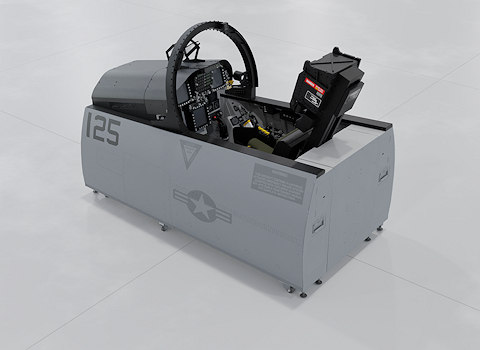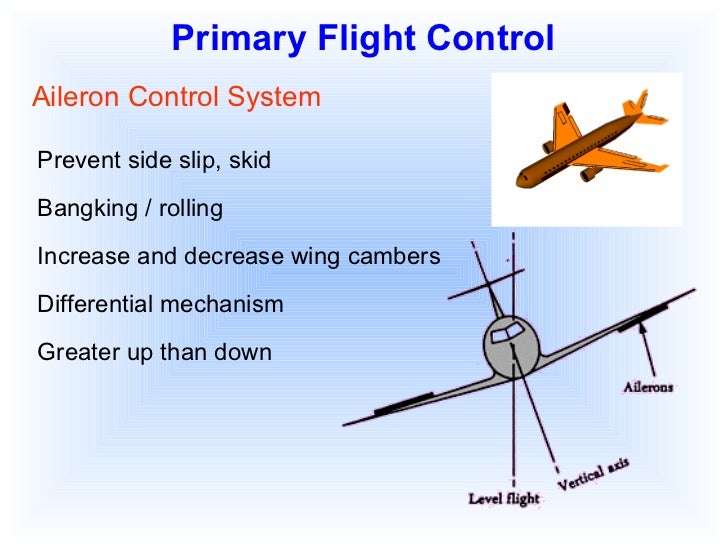

In order to increase the pitch angle, one would slowly increase the thrust, as shown in the left part of Figure 2.

#AIRCRAFT FLIGHT CONTROL SYSTEM FULL#
Suppose that one were flying a wide-body airplane in which control surfaces had been rendered inoperable by a full hydraulic failure and the airplane was not equipped with the present auto-throttle servocontrol system. In the many multiple-engine airplanes in which auto-throttle systems are already in place, no hardware changes are needed. The output of this system drives an auto-throttle servo forward or back, thereby causing the engines to increase or decrease thrust, and thereby, in turn, controlling the pitch of the airplane in such a way as to keep the phugoid mode well damped. The pilot commands this system by use of a thumb wheel. This control system, denoted the auto-throttle servocontrol system, strives to maintain a commanded pitch angle in the face of velocity and pitch-angle feedback. On the other hand, the phugoid oscillation is suppressed when the system of Figure 1 is used to control the wing and tail engines. The plots in the left part of this figure represent the dynamics of an MD-11 airplane in which the thrust of each of the wing engines has been increased by 6,000 lb (≈27 kN).
#AIRCRAFT FLIGHT CONTROL SYSTEM MANUAL#
The Phugoid Oscillation is excited when the engine thrust is increased in manual open-loop control. This may seem difficult at first, but lateral control is made simpler when the phugoid motion is highly damped by the closed-loop system shown in Figure 1. This method relieves the pilot of the longitudinal-control task, enabling the pilot to concentrate on using differential thrust to keep the wings level for landing. In the event of a failure in the primary flight-control system, the engines can be used to dampen the phugoid mode, and in the case of a multiple-engine airplane, they can be used to land the airplane safely. The response to the challenge was a method of providing longitudinal (pitch) control through modification of only the program of the FCC, without any changes in the engine-control computers and without changes in cockpit hardware. Inasmuch as engine-manufacturer warranties do not apply to modified engines, the challenge was to create a PCA system that does not entail modifications of the engine computers. The installation of the original PCA system entailed modifications not only of the flight-control computer (FCC) of the airplane but also of each engine-control computer. However, a PCA system makes landings feasible. The low phugoid damping and a high pilot workload made manual landings exceedingly difficult near the ground. This flight program also verified that the "weak link" is the phugoid mode, which is also known as the long-period pitch mode. The results of the flight test showed that without any operational control surfaces, one can land a "crippled airplane" (U.S. A thrust-modulation control system designed for this purpose was flight-tested in a propulsion-controlled aircraft (PCA) - an MD-11 airplane. Thus, the challenge has been to create sufficient thrust-modulation control to safely fly and land an airplane. This Auto-Throttle Servocontrol System responds to velocity and pitch-angle feedback by modulating engine thrust to damp the phugoid oscillation and maintain a commanded pitch angle, making it possible to land the MD-11 airplane by use of thrust control only. In the majority of such cases, crashes resulted, and over 1,200 people died because of control-system failures. In some of these emergency situations, engine thrust was successfully modulated by the pilots to maintain flightpath or pitch angle, but in other situations, lateral control was also needed. During recent years, however, major failures of flight-control systems have occurred in several airplanes, leaving engine thrust as the flight-control mode of last resort. Dryden Flight Research Center, Edwards, CaliforniaĮxtensive redundancy is designed into aircraft flight-control systems to ensure a low probability of failure.


 0 kommentar(er)
0 kommentar(er)
